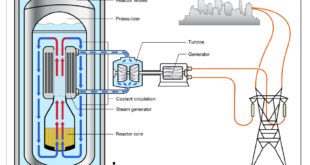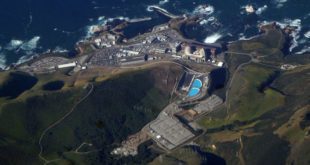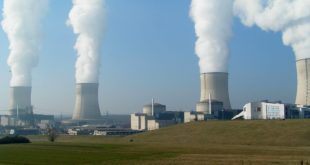Southern Alliance for Clean Energy Releases Expert Engineer’s Report Highlighting Major Roadblocks to Finishing Long-Abandoned Critically Compromised Reactor Project
KNOXVILLE,TN.///August 9, 2011///Efforts by the Tennessee Valley Authority (TVA) to resume construction at the long-shuttered, nearly 40-year-old Bellefonte nuclear reactor Unit 1 in Jackson County, Alabama, are unlikely to be successful due to seven major problems, including water damage to the reactor site foundation, compromised radiation containment in the unfinished reactor, and a lack of records about what exactly went on when the critical systems in the unfinished plant were cannibalized while the project lay dormant. The TVA Board is set to vote on this risky proposal at their August 18, 2011 meeting in Knoxville, Tennessee.
Those are among the key findings of a new report prepared for the Southern Alliance for Clean Energy (SACE) by Arnold Gundersen, chief engineer of Fairewinds Associates, Inc. The full report is available for download at www.cleanenergy.org. Gundersen is a nuclear engineer with more than 39 years of nuclear industry experience and oversight including being a former senior vice president nuclear licensee and reactor operator.
Gundersen’s expert analysis identifies seven specific areas of risk, which in Fairewinds’ opinion will cause further delays, additional costs and even possible suspension of the Bellefonte project if TVA decides to move forward with its construction. The key areas of concern highlighted by Gundersen are: (1) Bellefonte’s unique reactor design that lacks substantial worldwide operational history; (2) groundwater intrusion that is weakening the reactor site’s foundations; (3) missing critical nuclear Quality Assurance documents and incomplete records; (4) cannibalization of Bellefonte’s mechanical systems for small amounts of cash; (5) Bellefonte’s unique containment deficiencies; (6) historical precedents that don’t support TVA’s decision; and (7) costly post-Fukushima safety implementations.
Stephen Smith, executive director, Southern Alliance for Clean Energy, said: “TVA is possibly about to embark on one of the greatest financial gambles in the history of the agency. The history of the Tennessee Valley Authority’s (TVA) Bellefonte site in Jackson County, Alabama is unique and complicated spanning nearly forty years. A total of four reactors have been proposed and billions of dollars have been spent, but none have ever been fully constructed and not a kilowatt of electricity has ever been produced. The Southern Alliance for Clean Energy has serious concerns about TVA’s push to complete the mothballed, abandoned Bellefonte reactors. Given the damage to the containment vessel at Bellefonte, which is similar to the damage and ongoing problems to the containment vessel at Progress’ Crystal River plant, this new information in the report coupled with Bellefonte’s troubled history leads us to believe that TVA should not go forward with completion of the reactor at
Bellefonte. This report documents those concerns and makes a strong case to the TVA Board that finishing Bellefonte is not a gamble worth taking.”
Report author Arnold Gundersen, a nuclear engineer and energy adviser at Fairewinds Associates, Inc., said: “In the aftermath of the significant tragedy at Fukushima many lessons learned are coming to light. Three out of three Fukushima containment systems failed to contain radioactivity and failed to hold their strength as the reactor went through the substantial stresses of a design-basis accident. This series of accidents has fundamentally altered the risk assessment scenario upon which licensing and operation of nuclear power plants are predicated. Prior to the Fukushima accidents, the Nuclear Regulatory Commission (NRC) assumed that there was no likelihood that containment could ever fail. The energy releases from three hydrogen explosions at Fukushima have dramatic ramifications on containment integrity and design moving forward. It would be unconscionable in the wake of Fukushima to further skew risk factors and threaten public health and safety by licensing and operating
Bellefonte with a less than reliable 35-year old concrete containment that appears unable to properly hold its tension even prior to the stress of operations.”
The Fairewinds’ report highlighted numerous large challenges that TVA faces including:
* Bellefonte is already 40-years-old in regard to the age of its concrete and steel.
* Bellefonte has a unique reactor design that has never received an operating license in the US, and with which the nuclear industry and NRC have little actual experience making it unlikely to have lessons learned from similar nuclear power plants.
* Due to aging concrete, groundwater intrusion, and compromised tendons the TVA Bellefonte reactor Unit 1 containment may be significantly compromised in a manner that will be entirely undetectable until it fails under stress.
* Bellefonte has numerous structural and Quality Assurance (QA) flaws that will most likely be insurmountable. Other nuclear plants that have experienced less severe QA flaws than those at Bellefonte Unit 1 have been canceled.
* In the post-Fukushima environment where significant radiation has been released due to a nuclear accident, it is foolhardy to take more risks in public health and safety by utilizing a more challenging nuclear power plant design that has few industry learned lessons upon which to rely.
BELLEFONTE BACKGROUND
The history of the Tennessee Valley Authority’s Bellefonte site in Jackson County, Alabama spans nearly 40 years. TVA originally proposed building two unique Babcock & Wilcox (B&W) Mark-C “205” design reactors in 1973 at the rural site located along the banks of the Tennessee River’s Guntersville Reservoir, less than 10 miles from Scottsboro, AL. TVA received construction permits in 1974 from the Atomic Energy Commission, an agency that no longer exists and was eventually replaced in part by the U.S. Nuclear Regulatory Commission. Construction began that same year.
After 14 years and $4 billion in construction costs, TVA halted construction of both reactors at the Bellefonte site, citing declining power demand projections and skyrocketing costs. At the time, reactor Unit 1 was 88 percent complete and Unit 2 was 58 percent complete. With approval from the NRC, TVA placed both units in “deferred status” pursuant to NRC regulations that imposed significant maintenance, inspection and reporting responsibilities to ensure the safety and integrity of the reactors should TVA decide to reinstate construction operations.
Then, after 17 additional years and hundreds of millions of dollars spent maintaining the two partially-completed reactors, TVA requested in 2006 that the construction permit be terminated, which the NRC approved later that September. At this point, TVA’s regulatory responsibilities to maintain the partially constructed reactors ended, and during the following two years, TVA conducted “asset recovery” activities at the site. This resulted in an unmonitored cannibalization of the site; reactor Unit 1 was estimated to be only 55 percent complete and Unit 2 just 35 percent complete at the end of this period.
In 2007, shortly after TVA abandoned its plans for reactor Units 1 and 2, TVA proposed building two Toshiba-Westinghouse AP1000 designed reactors at the Bellefonte site – labeled Unit 3 and Unit 4 respectively. These proposed reactors became the lead reactor project in the U.S. through the industry consortium, NuStart Energy. However, as costs began to skyrocket for the AP1000, NuStart dropped TVA’s Bellefonte 3 and 4 as the lead reactor project in April 2009.
As the AP1000 costs skyrocketed and the proposal stalled, TVA turned their attention back to the two never-completed reactors that had been sitting idle for almost four decades. In August 2008, TVA once again proposed to complete reactors Units 1 and 2, and petitioned the NRC to reinstate the original construction permits that had been issued in 1974. The NRC granted TVA’s request for reinstatement of the construction permits in February 2009 amid much controversy, including the dissenting opinions of NRC Commissioner Gregory Jaczko and NRC Senior Project Manager Joseph Williams. The TVA Board of Directors is now set to vote on a proposal to restart construction of reactor Unit 1 at Bellefonte. TVA’s current estimate for completing this reactor is between $4 and $5 billion with a proposed completion date between 2018 and 2020.
 Alternative Energy HQ solar power for homes, wind energy, and bio fuel issues
Alternative Energy HQ solar power for homes, wind energy, and bio fuel issues






